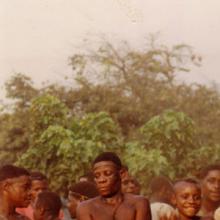Social Structure

Refractory (Clergy) Going to the Promised Land
Many refractory clergy left France to join other detractors, as this print shows, or wishfully encourages. However, this is an ambiguous image, which leaves open the possibility that rather than joining foreign monarchies, the clergy are crossing the river leading to Hell.

Massacre of the Prisoners
Yet another image from the newspaper R*volutions de Paris shows crowds massacring refractory clergy and prisoners.

Massacre of the Prisoners of St. Germain Abbey
In one of the most widely reported incidents of the September massacres, a "jury" of twelve "commissioners" was formed spontaneously in the Saint–Germain Abbey to judge the refractory clergy held there as prisoners.

The Third Incident of 14 July 1789
This engraving from the Berthault series depicts Stanislas Maillard bravely climbing on a plank over the dry moat surrounding the fortress to accept from one of the soldiers Launay’s "capitulation" of the Bastille.

Analyzing Inquisition Documents
The modules in Methods present case studies that demonstrate how scholars interpret different kinds of historical evidence in world history..

Speech in the Garden of the Palais-Royal
In this artistic rendition, on 12 July 1789 Camille Desmoulins stands on a table and encourages his listeners to rise against the threat to the Estates–General. He, and others of his ilk, would be successful in bringing about the fall of the Bastille on 14 July.

Fusillade in the Faubourg St. Antoine, 28 April 1789
This image chronicles a riot. Many believe it was caused by artisans who attacked the Reveillon wallpaper shop and factory because they believed that the owner was about to lower wages. Over two days, more than 6,000 attacked the place. On 28 April troops were called and fired on the crowd.

Aristocratic Occupations
The second image, a color drawing by the popular English caricaturist James Gillray in 1805 during the Empire, takes a different view of the Directory, suggesting that it is a time of moral decadence and self–aggrandizement.

Analyzing Music
The modules in Methods present case studies that demonstrate how scholars interpret different kinds of historical evidence in world history.

Ah! Monsignor!
Not uncommonly, revolutionary prints invoked excretory humor directed toward those priests who would not swear allegiance to the Revolution. Revolutionaries eliminated on their enemies; the latter might also receive enemas.